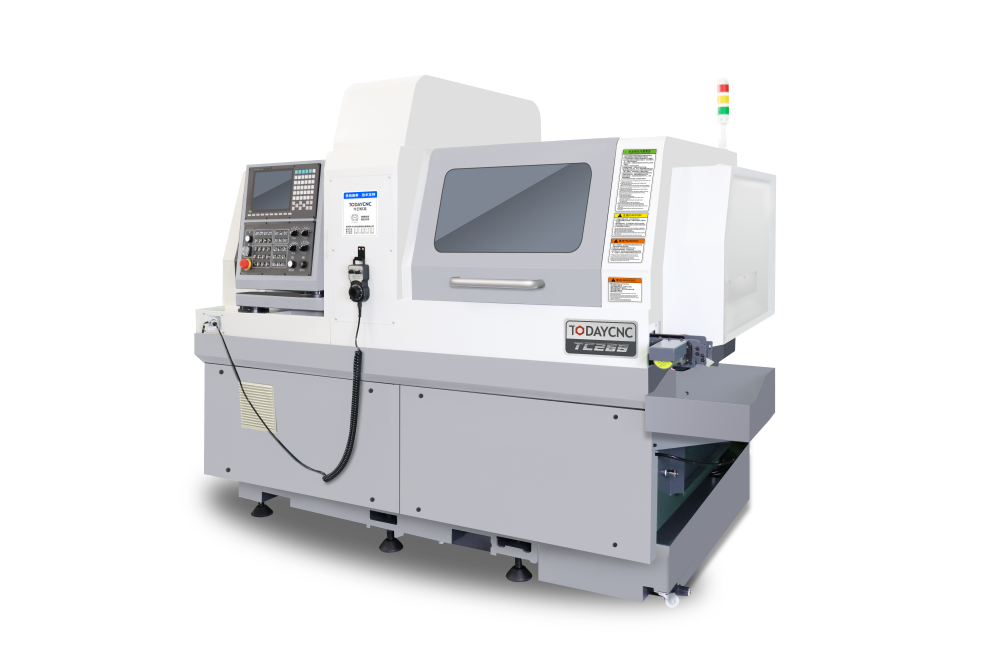Unlocking Precision: The Advantages of Twin Spindle CNC Turning Machines
Unlocking Precision: The Advantages of Twin Spindle CNC Turning Machines
Table of Contents
- Introduction to Twin Spindle CNC Turning Machines
- Understanding CNC Technology
- What is a Twin Spindle Machine?
- Key Benefits of Twin Spindle CNC Turning Machines
- Applications of Twin Spindle Machines
- Challenges and Solutions in Using Twin Spindle CNC Machines
- The Future of Twin Spindle Technology
- Conclusion
- FAQs
Introduction to Twin Spindle CNC Turning Machines
In the rapidly evolving world of manufacturing, precision and efficiency are paramount. **Twin Spindle CNC Turning Machines** have emerged as powerful tools designed to meet these demands. Utilizing advanced computer numerical control (CNC) technology, these machines can significantly enhance productivity while maintaining unmatched accuracy. This article delves into the intricacies of twin spindle CNC turning machines, highlighting their advantages, applications, and future potential in the manufacturing industry.
Understanding CNC Technology
CNC technology revolutionized the manufacturing landscape by automating and optimizing machining processes. CNC machines are programmed to perform precise movements, allowing for intricate designs and complex operations that human operators might struggle to achieve consistently. This technology encompasses various machine types, including milling machines, lathes, and turning machines, each serving specific roles within the manufacturing process.
What is a Twin Spindle Machine?
A **twin spindle CNC turning machine** is equipped with two spindles that can operate simultaneously. This dual-spindle design allows for two parts to be machined at the same time, effectively doubling production capacity without compromising on precision. The ability to switch between spindles also enhances flexibility, enabling the machining of different components or operations in a single setup.
Key Benefits of Twin Spindle CNC Turning Machines
Enhanced Precision and Accuracy
One of the foremost advantages of **twin spindle CNC turning machines** is their ability to achieve enhanced precision. The dual-spindle configuration allows for continuous operation, reducing the chances of errors that can occur during manual setups. With high-resolution encoders and sophisticated feedback systems, these machines maintain tight tolerances, ensuring that every part produced meets stringent quality standards.
Increased Productivity and Efficiency
Productivity is a critical factor in manufacturing. Twin spindle machines significantly increase efficiency by allowing for parallel machining operations. This means that while one spindle is working on one part, the other spindle can simultaneously process another, effectively cutting the overall cycle time in half. Manufacturers can produce more parts in less time, making it an attractive option for high-volume production environments.
Cost Savings Over Time
While the initial investment in a twin spindle CNC turning machine may be higher than a single spindle unit, the long-term cost savings can be substantial. The increased productivity and reduced cycle times lead to lower labor costs and minimized machine downtime. Furthermore, the precision offered by these machines reduces material waste due to fewer defects, enhancing overall profitability.
Applications of Twin Spindle Machines
The versatility of twin spindle CNC turning machines makes them ideal for a wide range of applications across various industries. Common uses include:
- **Automotive Manufacturing:** Precision machining of engine components, transmission parts, and other critical components.
- **Aerospace Engineering:** Producing parts that require high precision and strict material specifications.
- **Medical Device Manufacturing:** Creating intricate components for surgical instruments and implants.
- **Consumer Electronics:** Machining small parts for devices such as smartphones and laptops.
The adaptability to various materials, including metals, plastics, and composites, further enhances their appeal across multiple sectors.
Challenges and Solutions in Using Twin Spindle CNC Machines
While twin spindle CNC turning machines offer numerous advantages, they are not without challenges. Some common issues include:
- **Complex Setup:** The initial setup can be more complex compared to single spindle machines. However, investing in skilled operators and comprehensive training can mitigate this challenge.
- **Higher Maintenance Requirements:** Dual spindles may require more frequent maintenance. Regular servicing and proper upkeep can ensure long-term reliability.
- **Cost of Investment:** The higher upfront costs can be a barrier for smaller manufacturers. However, assessing the potential return on investment through increased productivity can justify the expense.
The Future of Twin Spindle Technology
The evolution of CNC technology continues at a rapid pace, with twin spindle machines at the forefront. Innovations such as advanced automation, artificial intelligence integration, and improved software interfaces are set to enhance their capabilities further. As manufacturers seek ways to stay competitive, investing in the latest twin spindle technology will likely become a strategic priority.
Conclusion
The advantages of **twin spindle CNC turning machines** are clear: enhanced precision, increased productivity, and significant cost savings make them an invaluable asset in modern manufacturing. Their ability to adapt to various industries and applications highlights their versatility, ensuring they remain a key player in the machinery landscape. As technology progresses, embracing twin spindle machines will undoubtedly unlock new levels of efficiency and innovation in manufacturing.
FAQs
1. What are the primary advantages of twin spindle CNC turning machines?
The primary advantages include enhanced precision, increased productivity through simultaneous operations, and long-term cost savings due to reduced labor and material waste.
2. In which industries are twin spindle CNC machines commonly used?
They are commonly used in automotive, aerospace, medical device manufacturing, and consumer electronics industries due to their versatility and precision.
3. How do twin spindle machines improve efficiency?
By allowing two spindles to operate simultaneously, these machines cut cycle times in half, enabling manufacturers to produce more parts in less time.
4. What challenges are associated with twin spindle CNC machines?
Challenges include complex setups, higher maintenance requirements, and initial cost of investment. However, these can be managed through proper training and regular maintenance.
5. What is the future outlook for twin spindle CNC technology?
The future looks promising, with advancements in automation, AI integration, and software interfaces set to enhance the capabilities of twin spindle machines even further.
This comprehensive exploration of twin spindle CNC turning machines illustrates their significant impact on the manufacturing sector. Emphasizing precision, productivity, and cost efficiency, these machines represent a pivotal advancement in machining technology, positioning manufacturers for success in an increasingly competitive landscape.
Related Blog














